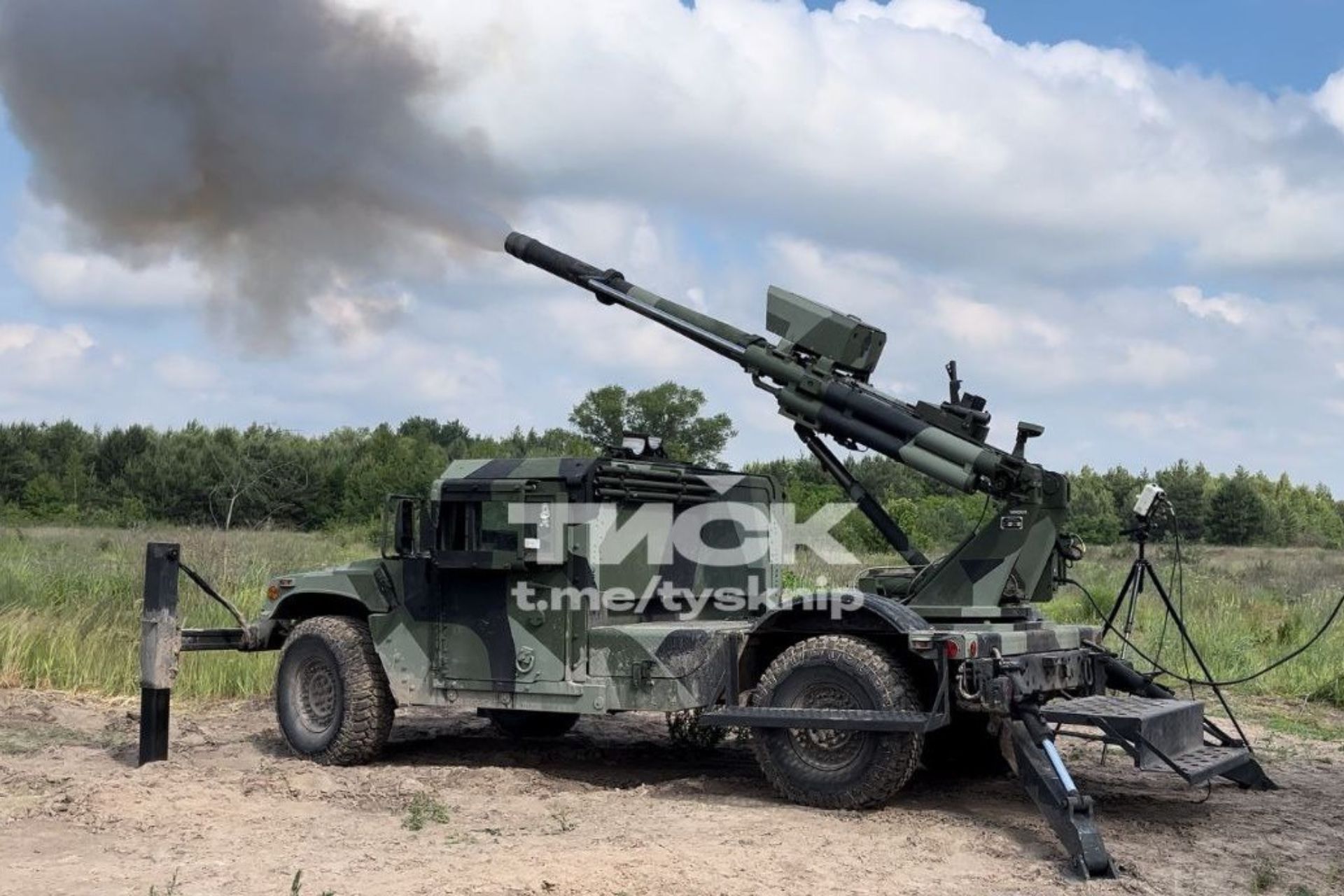Breaking News
105mm Hawkeye Self-Propelled Howitzers on HMMWV Chassis Spotted in Ukraine.
The Ukrainian Armed Forces have recently been observed using American 105mm self-propelled howitzers, the 2-CT Hawkeye, mounted on HMMWV all-terrain vehicle chassis. These weapons were supplied to Ukraine by the American company AM General. According to available information, the first tests of these systems began in April 2024 following a secret delivery. The presence of these howitzers near the front line in Ukraine suggests that the tests were successful, and the performance of these systems on the battlefield could influence the Pentagon's decision on their adoption.
Follow Army Recognition on Google News at this link

The howitzer supports several types of 105mm ammunition, including the M1 and M1130A1 high-explosive fragmentation shells, the M913 rocket-assisted projectiles, the M314 illumination rounds, as well as the M60/M60A2 smoke screen (Picture source: Telegram channel @TyskNIP)
On September 13, 2024, the first visual evidence surfaced: a photo of the 2-CT Hawkeye being tested by the Ukrainian military was published by the TyskNIP community on Telegram. Although the exact date and location of the image are not specified, the authors suggest it was taken in the spring.
Shortly afterward, additional photos reportedly taken in Ukraine appeared on AM General’s website. At this stage, it is important to note that the Hawkeye remains an experimental prototype and has not yet entered mass production. Only a few units have been produced, with two handed over to the U.S. Army.
From a technical perspective, the 2-CT Hawkeye is based on an M1152 Humvee, a two-door vehicle with a total mass of 6.4 tons, equipped with a V8 turbo diesel engine of 205 horsepower and an anti-lock braking system. To accommodate the 105mm howitzer, the vehicle's chassis was reinforced, and the howitzer itself was significantly lightened. Soft Recoil Technology was integrated to stabilize the HMMWV chassis during firing; otherwise, the structure and artillery system would be at risk of disintegration due to the recoil.
The system comprises two HMMWV 2-CT vehicles: one serves as the platform for the 105mm howitzer, while the other transports the crew and ammunition. This configuration provides exceptional mobility on the battlefield, with the ability to fire and move out of position in less than three minutes. It takes 1.5 minutes to prepare the artillery for firing once the vehicle stops and only three minutes to vacate the area after the last shot. This level of mobility is a significant advantage, reducing the system's vulnerability to threats such as Russian FPV drones, which are increasingly used in combat operations.
The howitzer supports several types of 105mm ammunition, including the M1 and M1130A1 high-explosive fragmentation shells, the M913 rocket-assisted projectiles, the M314 illumination rounds, as well as the M60/M60A2 smoke screens. The cannon, produced by Mandus Group, has a barrel length of 27 calibers, offering a firing range of 11.6 km with standard ammunition and up to 19.5 km with rocket-assisted shells. The system features a digital fire control system and onboard communications, eliminating the need for surveyed firing points, aiming circles, or guide wires.
Despite these advanced features, military experts emphasize that American self-propelled howitzers are not completely immune to attacks, particularly from Russian FPV drones, which are increasingly becoming one of the primary means of destroying military equipment on the battlefield.
It is worth noting that in 2021, the Pentagon signed an agreement with AM General for the delivery of two Humvee 2-CT Hawkeye mobile howitzer systems. The U.S. Department of Defense planned to begin testing these systems in 2022, intending to decide on their acquisition for the U.S. Army based on the results. However, no official announcement from the Pentagon has been made so far, suggesting that Hawkeye's performance in Ukraine could influence this decision.

The 2-CT Hawkeye, presumably during tests or combat operations in Ukraine (Picture source: AM General)


























